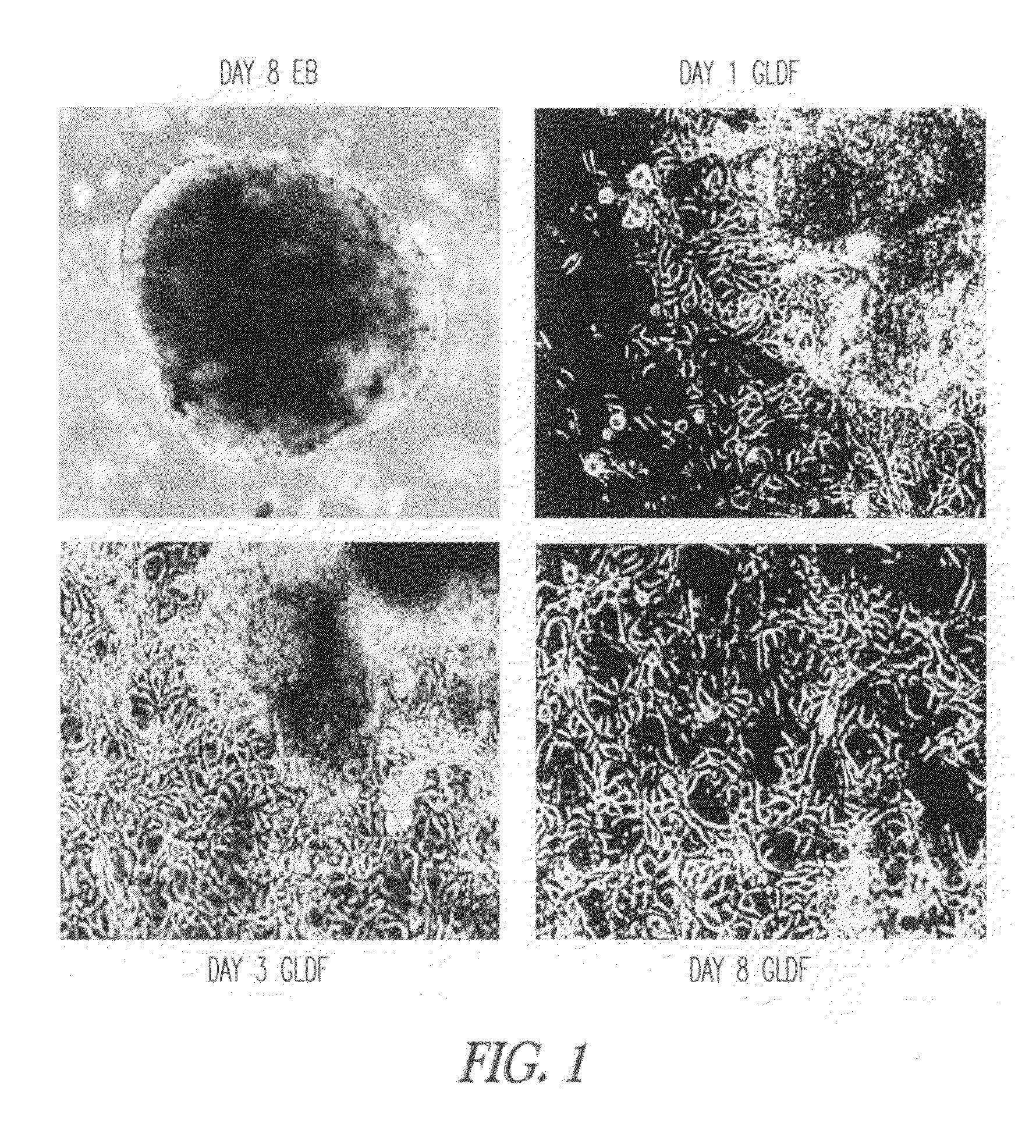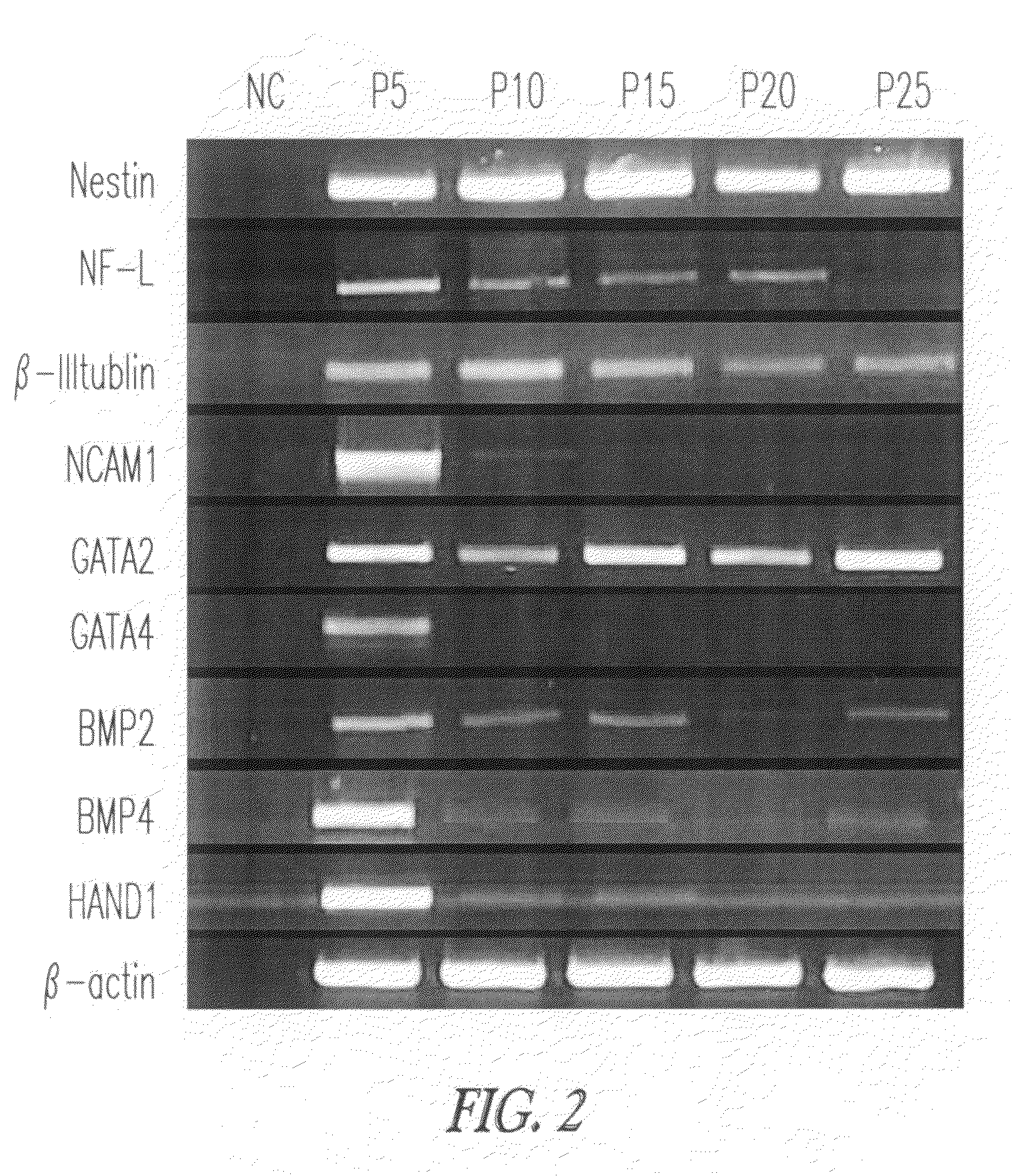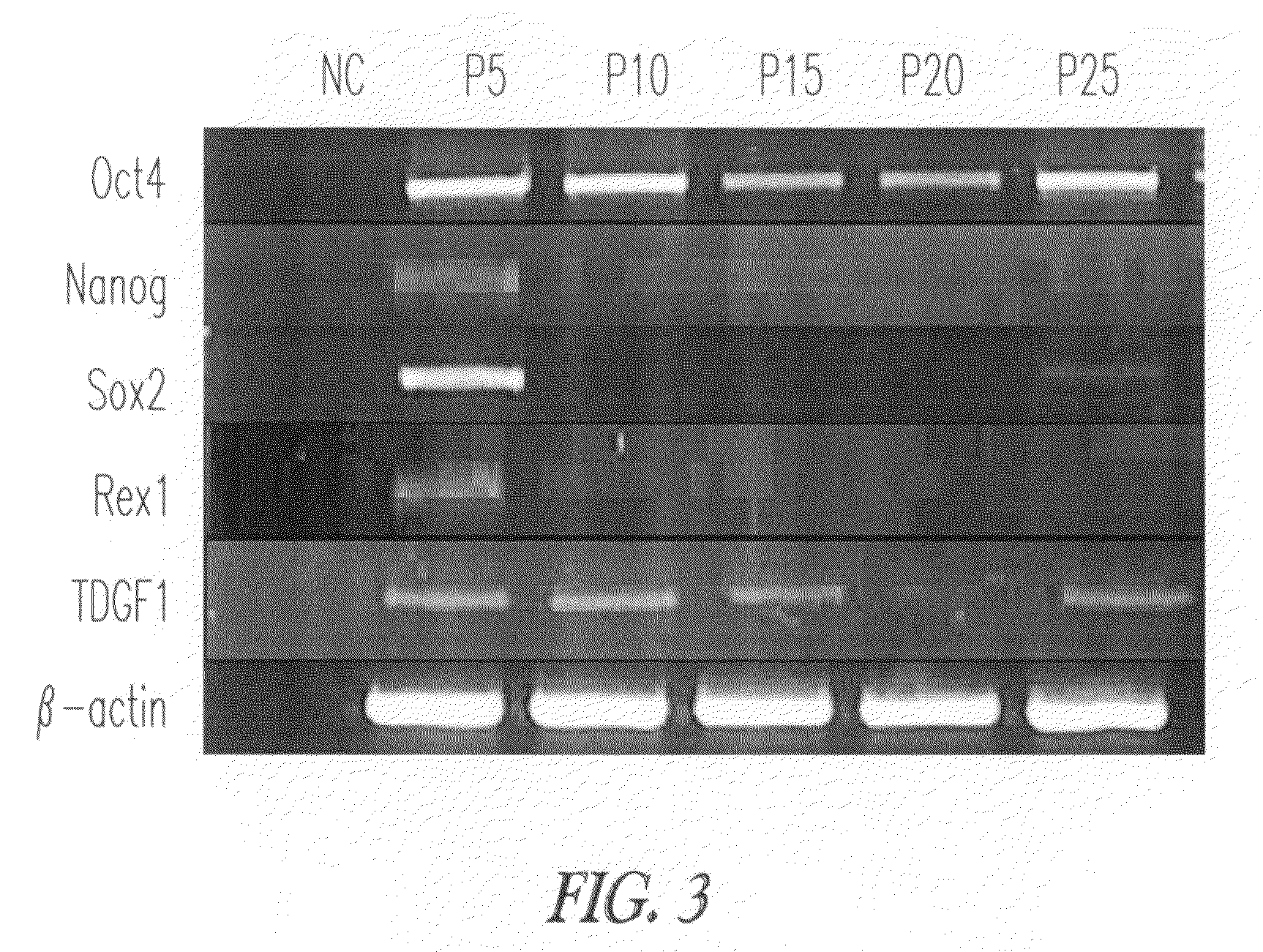Xeno-free culture conditions for human embryonic stem cells and methods thereof
a technology of embryonic stem cells and culture conditions, which is applied in the field of stem cell culture and propagation, can solve the problems of limited use, unsuitable hescs for therapeutic purposes, and the approach of using mouse feeder cells with significant downsides in the derivation of human embryonic stem cell lines
- Summary
- Abstract
- Description
- Claims
- Application Information
AI Technical Summary
Benefits of technology
Problems solved by technology
Method used
Image
Examples
example 1
Generation of Germ Lineage Derived Feeder Cells (GLDF Cells)
Direct Differentiation to Obtain Embryoid Bodies
[0091]Embryoid bodies (EBs) were obtained by culturing hESCs in suspension for 7 days. hESCs were harvested by using 0.05% trypsin (Invitrogen) and plated on non-tissue culture treated dishes (approximately 107 cells / 10 cm dish), and grown in medium for 7 days. Media comprises of KO-DMEM basal medium supplemented with 20% human serum, glutamine, 1% non-essential amino acid, beta mercaptoethanol and pen-strep. The number of EBs was determined by counting EBs in 20 different fields at a low magnification (10×) using an TE2000 microscope (Nikon). Media was changed after 3 days.
Obtaining Germ Lineage Derived Feeder Cells (GLDF Cells)
[0092]To prepare hESC-derived feeders or the GLDF cells, EBs were plated in a T75 tissue culture flask coated with 0.1% gelatin in a GLDF media which consists of KO-DMEM supplemented with 10% KO-Serum or 10% human serum, 2 mM Glutamine, 1×10−8 M dexame...
example 2
Gene Expression Profile
Characterization of GLDF Cells for Differentiation Markers by RT-PCR
[0093]Cells were analyzed for the differentiation markers after different passages. GLDF cells were analyzed for the expression of differentiation markers by RT-PCR. GLDF cells were positive for the expression of Nestin, NCAM, tubulin, GATA2, GATA-4, BMP2, BMP4, Hand1, Vimentin, CK18, CK19, NF heavy chain, NF light chain and GFAP.
[0094]RNA extractions were carried out with the RNeasy mini kit. GLDF were vortexed for 1 min to shear genomic DNA before loading onto the columns, and then eluted in a minimum volume of 30 μl and a maximum volume of 2×50 μl RNAse-free water. RNA obtained with this procedure was essentially free of genomic DNA. When using different extraction procedures, a DNAse I treatment, followed by phenol extraction and ethanol precipitation, was applied to remove traces of contaminating DNA.
[0095]RNA obtained from the cells was reverse transcribed in the presence of 5 mM MgCl2, ...
example 3
Culture and Propagation of Human Embryonic Stem Cells Using GLDF Cells
Derivation of Human Embryonic Stem Cell Lines (HUES-7 and HUES-9)
[0109]Human embryos were produced by the ART Center, Manipal Hospital, Bangalore. Surplus embryos were used for hESC derivation with informed consent. The procedure to derive hESCs from surplus embryos was in accordance with the Guidelines of Indian Council of Medical Research (ICMR) and approved by the Ethics Committee of Manipal Hospital.
[0110]Zona pellucida of the blastocyst was removed with 0.5% pronase. Inner cell mass was isolated manually and cultured on xeno-free culture system comprising Mit-C treated GLDF feeder cells prepared as described above. The culture medium consisted of 78% KO-DMEM / F, 20% KO-SR, 2 mM L-glutamine, 1% nonessential amino acids, 0.1 mM β-mercaptoethanol, and 4 ng / ml bFGF. The medium was changed every day. Ten to 14 days after initial plating, colonies with typical hESCs morphology appeared. These colonies were dissociat...
PUM
 Login to View More
Login to View More Abstract
Description
Claims
Application Information
 Login to View More
Login to View More - R&D
- Intellectual Property
- Life Sciences
- Materials
- Tech Scout
- Unparalleled Data Quality
- Higher Quality Content
- 60% Fewer Hallucinations
Browse by: Latest US Patents, China's latest patents, Technical Efficacy Thesaurus, Application Domain, Technology Topic, Popular Technical Reports.
© 2025 PatSnap. All rights reserved.Legal|Privacy policy|Modern Slavery Act Transparency Statement|Sitemap|About US| Contact US: help@patsnap.com



